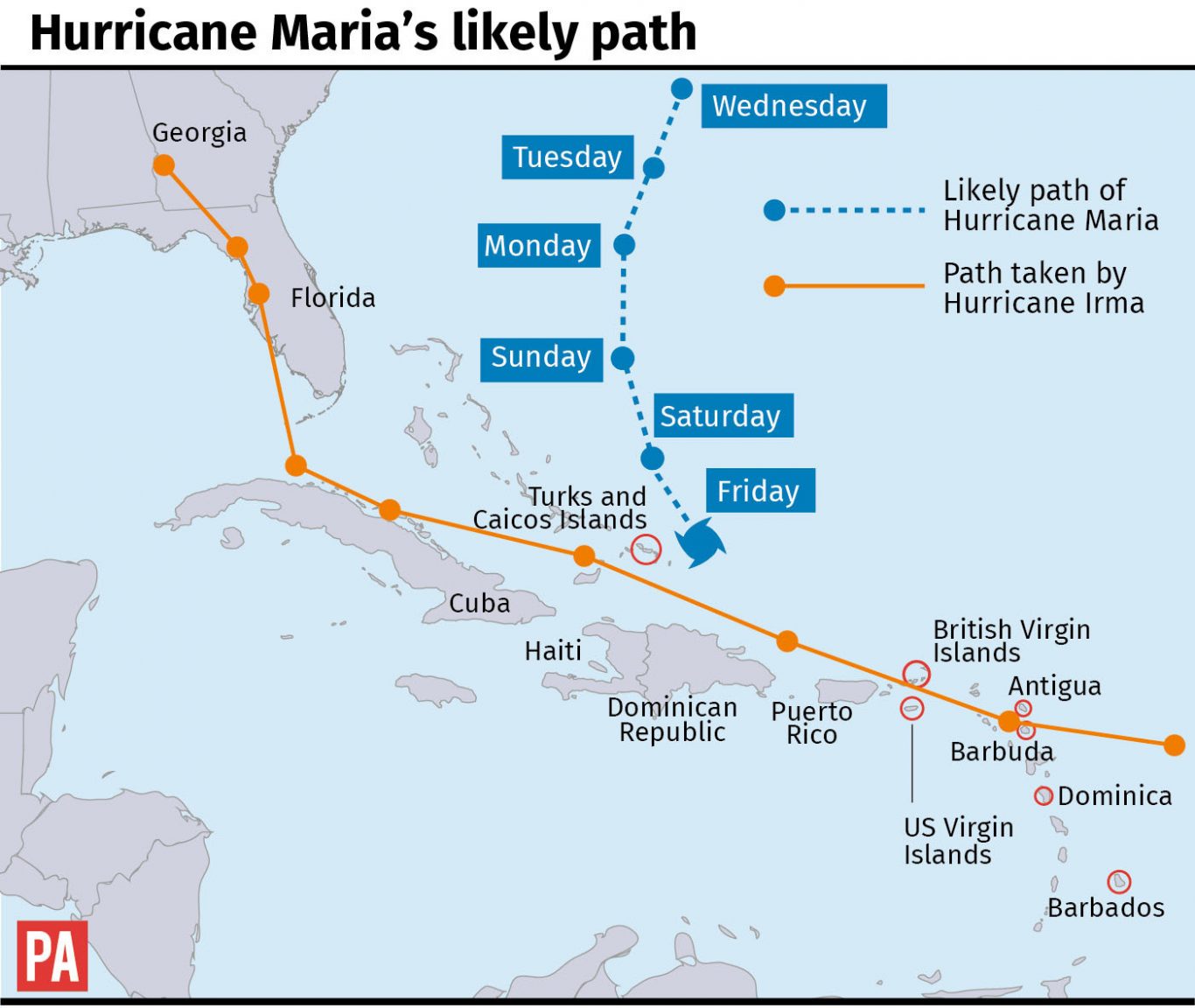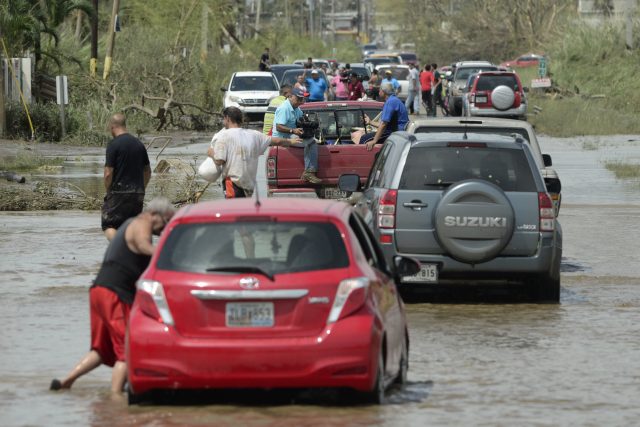Scramble to reach people in danger from Puerto Rico dam amid hurricane misery
Authorities launched an evacuation of the 70,000 people living downstream of Guajataca Dam in north-west Puerto Rico.

Puerto Rican officials could not reach more than half their towns amid a push to evacuate tens of thousands of people over a failing dam as the disaster wrought by Hurricane Maria becomes clear.
Authorities launched an evacuation of the 70,000 people living downstream of Guajataca Dam in north-west Puerto Rico.
They sent buses to move people away on Friday and posted frantic warnings on Twitter that went unseen by many in the blacked-out coastal area.
The 316m dam, built around 1928, holds back a man-made lake covering about two square miles (5 sq km).
More than 15 inches (nearly 40cm) of rain fell on the surrounding mountains after the Category 4 Maria left the island on Wednesday afternoon, swelling the reservoir.
An engineer inspecting the dam reported a “contained breach” that officials quickly realised was a crack that could be the first sign of total failure, US National Weather Service meteorologist Anthony Reynes said.
“There’s no clue as to how long or how this can evolve. That is why the authorities are moving so fast because they also have the challenges of all the debris. It is a really, really dire situation,” he said.
Government spokesman Carlos Bermudez said that officials could not reach 40 of the 78 municipalities on the island more than two days after the hurricane hit, toppling power lines and mobile phone towers and sending floods cascading through city streets.

Officials said 1,360 of the island’s 1,600 phone towers had been brought down, and 85% of above-ground and underground phone and internet cables were knocked out.
With roads blocked and phones dead, officials said, the situation may be worse than they know.
“We haven’t seen the extent of the damage,” Governor Ricardo Rossello said. He could not say when power might be restored.
Major General Derek P Rydholm, deputy to the chief of the Air Force Reserve, said at the Pentagon that it was impossible to say when communication and power would be restored.
He said mobile communications systems are being flown in but acknowledged “it’s going to take a while” before people in Puerto Rico will be able to communicate with their families outside the island.
Until Friday, he said, “there was no real understanding at all of the gravity of the situation”.
The island’s electric grid was in sorry shape long before Maria struck. The territory’s debt crisis has left agencies like the state power company broke.
It abandoned most basic maintenance in recent years, leaving the island subject to regular blackouts.
“Some transmission structures collapsed,” Mr Rossello said, adding that there was no severe damage to electric plants.
He said he was distributing 250 satellite phones from Fema to mayors across the island to re-establish contact.
The death toll from Maria stood at six, but was likely to rise.

At least 27 lives in all have been lost around the Caribbean, including at least 15 on hard-hit Dominica. Haiti reported three deaths; Guadeloupe, two; and the Dominican Republic, one.
Across Puerto Rico, more than 15,000 people are in shelters, including some 2,000 rescued from the north coastal town of Toa Baja.
Some of the island’s 3.4 million people planned to head to the US to temporarily escape the devastation.
At least in the short term, though, the soggy misery will continue: Additional rain – up to 6 inches (15cm) – is expected over Saturday.





